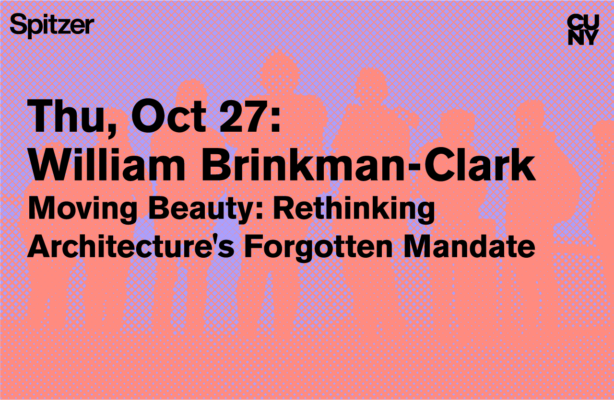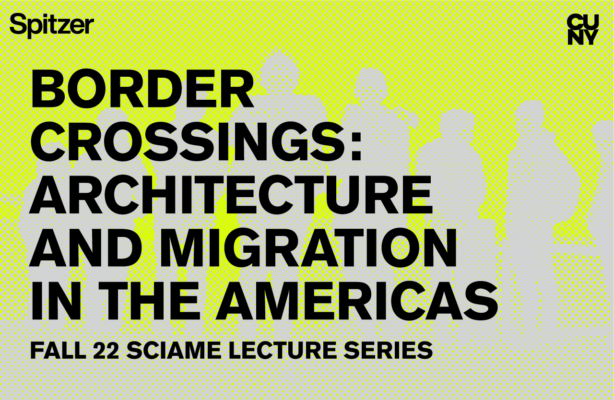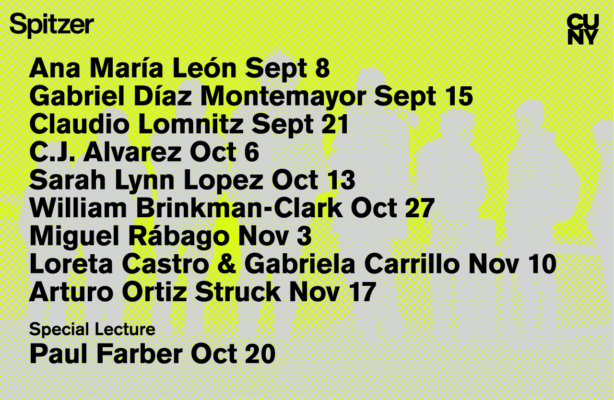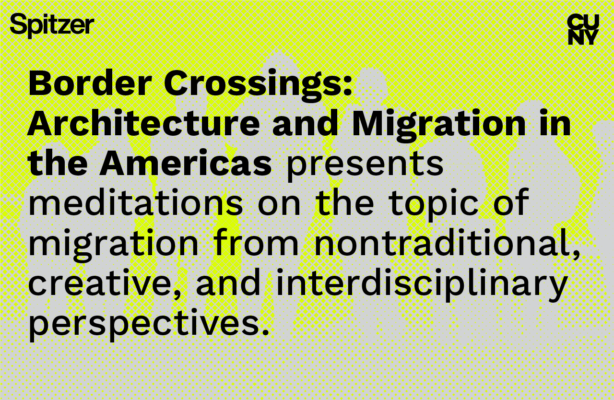Archived Video
Fall 2022 Sciame Lecture Series: William Brinkman-Clark
Archived Video
Moving Beauty: Rethinking Architecture's Forgotten Mandate
Thursday, Oct 27, 2022
6:00 pm - 7:30 pm
Sciame Auditorium (Room 107)
141 Convent Avenue
New York, NY 10031
Zoom option available
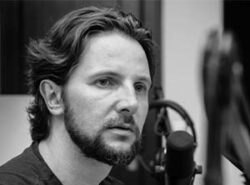
This lecture is held in-person and is part of the Fall 2022 Sciame Lecture Series, titled "Border Crossings: Architecture and Migration in the Americas."
William Brinkman-Clark is a professor at the Universidad Nacional Autónoma de México. His research focuses on the cosmetic relation between the aesthetic and the politic as it regards public space and Architecture. He has written various articles for Historia y Grafía, Cuadernos de Vivienda y Urbanismo, Theorein and Bitácora Arquitectura. In 2019 he published Ciudad:Tragedia, an exploration of the unavoidably tragic nature of all modern practices of architectural and urban design. His forthcoming book, Antígona Plástica, explores the way aesthetic categories of rigidity and uprightness have manifested and entrenched themselves in western notions of class and gender, and how the concept of plasticity can be an instrument that can not only help us in understanding the resilience of traditional societal structuring, but also in their dismantlement.
Throughout late-modernity, Architecture has progressively relied on scientific and technological knowledge as a means to justify itself and its projects. With some notable exceptions, aesthetic considerations have been relegated to a secondary or complementary role. Beauty in Architecture has become something that can be considered only if Reason has first solved its socio-economical requirements; and even then, we tend to frame the quest for Beauty as superficial, capricious, and banal.
Throughout Western Culture, Beauty has had an unrelinquishable part in the construction of any World deemed worthy of chasing. Architecture holds a special responsibility in these Ethics: the Vitruvian Triad does not give us a choice on whether we should incorporate Beauty into our design of the habitable world; it mandates Stability, Utility,and Beauty.
In the relation between Architecture and Migration, this forgotten mandate becomes apparent. Solving problems such as -- among others -- housing for the displaced or shelter for those in movement in a functional and economical manner is, of course, indispensable. However, Architecture must remember that Beauty it is one of the main forces that jumpstarts human movement. Aristotle speculated that only a beautiful image can move us in the direction of what is fair and just. Has that really changed? If not, Architecture must not only reconsider the importance of Beauty, it must also question who determines what is Beautiful: are we to continue pretending a few can dictate what Beauty is, or are we to open our eyes to what really moves people; to Democratic Beauty?
Professor Bradley Horn will introduce the speaker.
Suggested Reading: Notes on the Topologies of the Migrant Body and the Philosophy of the History of Capital.
"Border Crossings: Architecture and Migration" in the Americas presents meditations on the topic of migration from nontraditional, creative, and interdisciplinary perspectives. The distinguished speakers -- architects, landscape architects, architecture historians, social historians, a philosopher, an anthropologist, and an attorney -- question conventions, especially the conceptualization of migration as linear. They frame migration as a multivalent process, considering the lived realities and material conditions of migration, historically and in the present. Migration in the Americas is more than just the movement and resettlement of bodies, numbers that cross lines and appear/disappear in different places. Migration is not merely (dis)placement, it is also a metamorphosis. Migrants are human beings who are transformed to the core by their movement, and they transform not only their places of departure and arrival, but the entire space that is filled with their journeys.
All lectures are free, open to the public, and held in the Bernard and Anne Spitzer School of Architecture Sciame Auditorium with remote option available. See https://www.ccny.cuny.edu/return-campus for current requirements for in-person visitors.
For remote viewing via Zoom, please register here.
This lecture series is made possible by the Spitzer Architecture Fund and the generous support of Frank Sciame ’74, CEO of Sciame Construction.
Export as:


